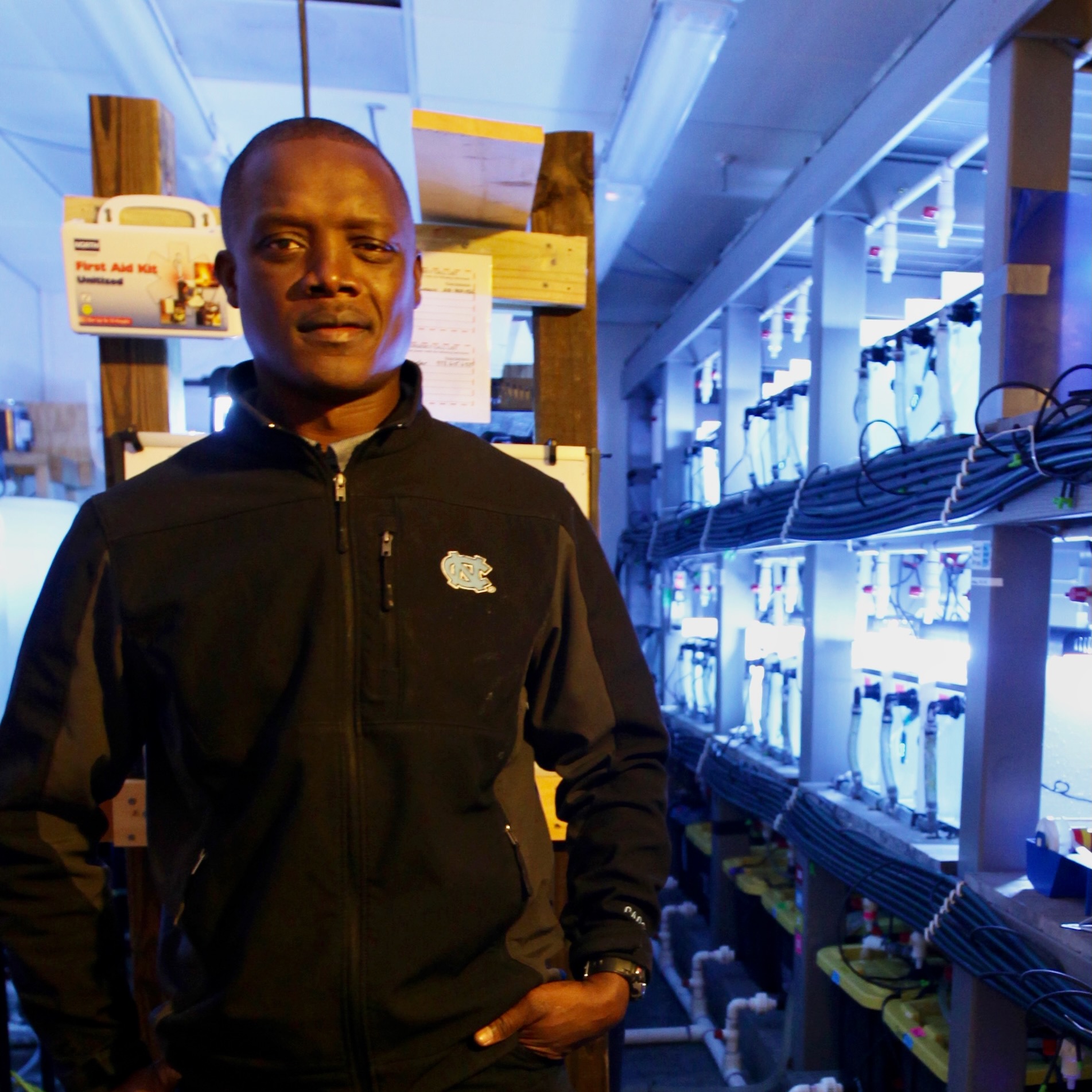Dr. Castillo studies the relationship between coral physiology and the physical environment, comparing samples collected in Belize to those grown in the lab.

Karl Castillo, Ph.D.
Assistant Professor of Marine Sciences (University of North Carolina at Chapel Hill
Dr. Castillo is originally from Belize and returns there frequently to perform fieldwork. He earned his master’s and Ph.D. from the University of South Carolina and completed postdoctoral research at the University of North Carolina. He joined the faculty at UNC in 2012.
Around the world, coral reefs are suffering the effects of climate change — reefs in the Caribbean have shrunk ~60% since the 1980s. Three Orbicella species of coral previously served as the primary reef builders, but in the past few decades their numbers have declined more quickly than other coral species. (Orbicella also grow more slowly than these other species, which makes recovery of a reef more difficult.) As these reefs die, the fish and marine invertebrates that depend on them for food and shelter are also dying out. Coral spawn larvae, which are swept up by the ocean currents until they mature and settle down in a new reef. In order to design better conservation plans, it is necessary to understand whether these reefs represent distinct populations of Orbicella or if there is movement of coral from one reef to another.
In a recent paper, Dr. Castillo and collaborators examined samples of Orbicella faveolata (mountainous star coral) collected between 1998 and 2015 from 10 sites around the Caribbean. They extracted DNA from the coral samples and compared positions of the genome that were known to be variable, to see if there was a strong association between a particular geographic region and a particular genetic variant. For the most part, they did not see strong associations, which indicates that the coral populations throughout the Caribbean are mixing — although they did see that eastern populations formed a distinct cluster from western populations, which has been seen before in other coral species.
Additionally, they found that their Belize sample and Mexico sample were quite different, despite both being part of the Mesoamerican Barrier Reef System and not very far apart (~300 miles). There is some evidence that ocean currents could explain this, but even so, the level of differentiation was surprising. This information will be useful for designing programs to protect the genetic diversity of coral, although the authors stress that their findings reflect long-term patterns across millions of years of evolution, and not necessarily currently-occurring dispersal.